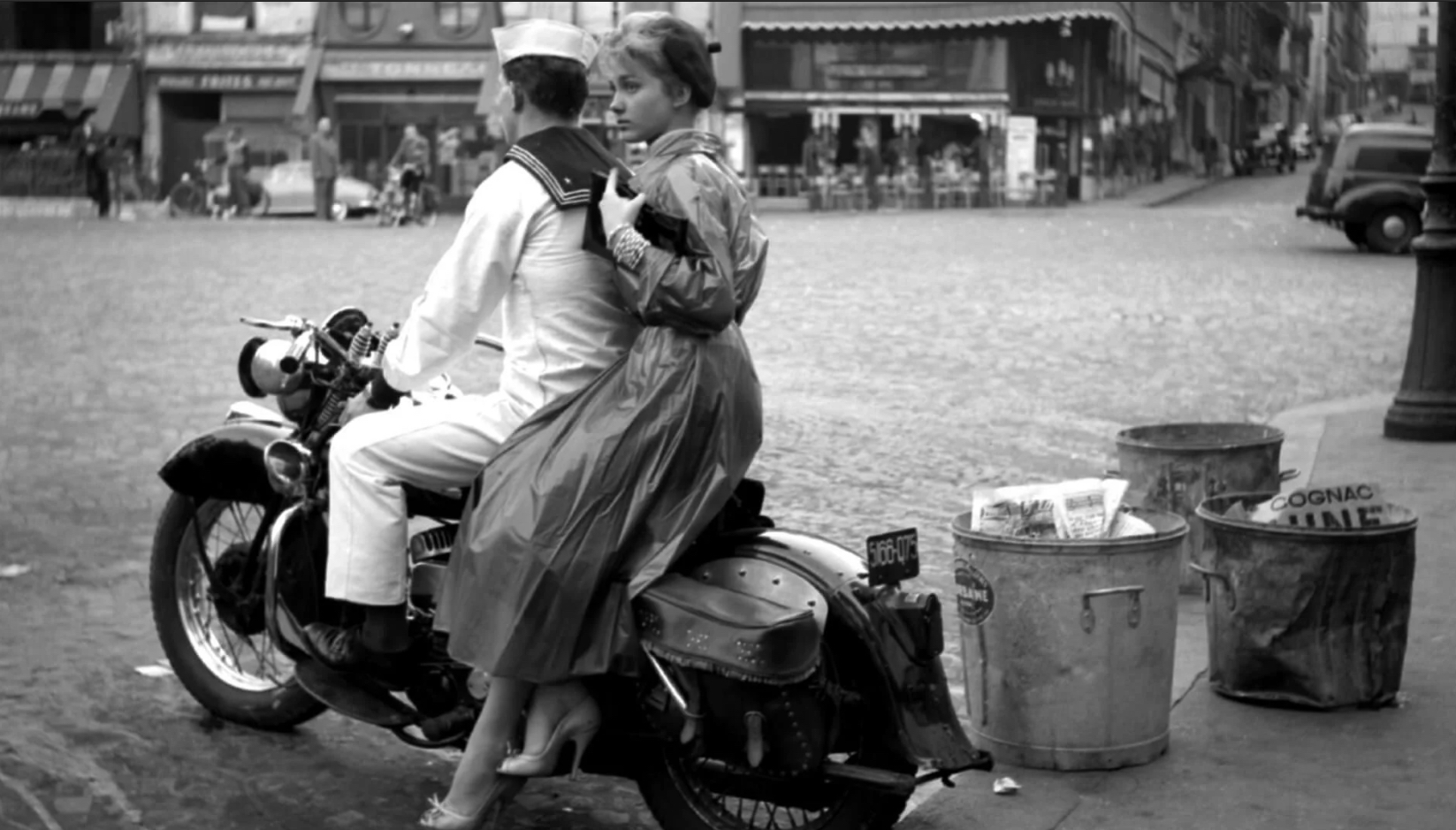BOB LE FLAMBEUR (France, 1956, Jean-Pierre Melville)
/The cinematic birth of the cool! —J. Hoberman
Suffused with wry humor, Jean-Pierre Melville’s BOB LE FLAMBEUR melds the toughness of American gangster films with Gallic sophistication to lay the roadmap for the French New Wave. It could be argued that Jean-Luc Godard could not have made BREATHLESS (1959) without BOB LE FLAMBEUR. (Melville even later appeared in BREATHLESS, as a director interviewed by Jean Seberg, proclaiming his desire “to become immortal and then die”). When François Truffaut first saw the film — the first of Melville’s series of films noir — he exclaimed, “This is the kind of film that we want to make!”
BOB LE FLAMBEUR follows an aging safecracker and compulsive gambler named Bob (Roger Duchesne) who must navigate a treacherous underworld of pimps, moneymen, and naïve associates while plotting one last score — the heist of the Deauville casino. BOB LE FLAMBEUR opens with day breaking at Sacre-Coeur, and then follows the tram down the steep slope of Montmartre to Pigalle, snuffing its lights and shuttering its doors in anticipation of the day. This scene is reminiscent of Georges Franju’s opening to LE SANG DES BÊTES (BLOOD OF THE BEASTS) (1949), where young lovers embracing at the flea market yield to an abattoir. Both are, as Melville puts it, “love letters to a Paris that no longer exists.”
Bob lives by night and sleeps by day, thriving on his nostalgia for the prewar gangster milieu. He drives through the streets of Paris in an American car dogged by a daring camera, a swinging jazz track, and a cool obsession. Like Max, the protagonist in Jacques Becker’s heist film TOUCHEZ PAS AU GRISBI (1954), Bob is a loner surrounded by a loyal coterie of men. Yet, whereas Max seems invulnerable, Bob has a fatal flaw: his gambling addiction. From cards and dice to harness racing, if Bob can bet or play the odds, he does.
In the opening sequence of the film, street sweepers clean the streets and a young girl named Anne appears, sauntering by men who ogle and stare. According to the voice-over narration, this young girl (portrayed by Isabelle Corey) has “bloomed early for her age.” As Anne strolls aimlessly, an American sailor lures her onto the back of his motorcycle and rides off with his new “prize.” Anne assumes the role of a femme fatale, and her character seems to have been an inspiration for Jean Seberg in Jean-Luc Godard’s BREATHLESS (1960). Ambitious and amoral, Anne both receives and gives information, acting as a conduit through her sexual liaisons. Bob’s world is generally male-dominated, and he seems unfazed by femininity. Suzanne (Colette Fleury) the nagging wife of croupier named Jean, proves the age-old noir wisdom of never confiding in a femme fatale. The two women know about the casino heist and neither of them remain discreet about it.
BOB LE FLAMBEUR is a variation on John Huston’s classic heist film THE ASPHALT JUNGLE (1950). Melville, an avid admirer and collector of Americana and American crime movies, was inspired by the gangsters and brooding “tough guys” in Hollywood features of the 1930s and ‘40s. As in THE ASPHALT JUNGLE, the gang members are all working-class men who choose a life of crime as the viable, logical, and ultimately only alternative to slaving away in an economic system that they can barely survive in. The decision to willingly choose lives of criminality is a major theme in the film. Most of the people in Bob’s circle now lead more or less straight lives, and yet, their criminal pasts remain.
Filmed over a two-year period, Melville pieced together BOB LE FLAMBEUR when he had enough money to cover the expenses generated by a few days of filmmaking. The director began shooting on location in 1954 in gambling dens that were soon demolished for housing developments. Shot on location in crisp black-and-white by Henri Decaë (who was also the cinematographer for Francois Truffaut’s THE 400 BLOWS and René Clément’s PURPLE NOON), BOB LE FLAMBEUR’s hand-held shots and natural lighting lend the film a visual fluidity impossible to achieve in the studio. Ultimately, Decaë achieves a sense of gritty realism that perfectly captures the tawdry glamour of Pigalle.
Ultimately, BOB LE FLAMBEUR is the prototype for Melville’s cinematic world: a dryly elegant network of laconic gangsters, at once powered and haunted by American cinema, while also leading the path toward the French New Wave.
Melville’s film influenced the two versions of the American film OCEANS ELEVEN (1960 and 2001) as well as Paul Thomas Anderson’s HARD EIGHT (1996). Furthermore, Melville’s film was remade by Neil Jordan as THE GOOD THIEF in 2002.
ALPHAVILLE
(France, 1956)
Director: Jean-Pierre Melville
Screenwriter: Jean-Pierre Melville, Auguste Le Breton
Cinematographer: Henri Decaë
Cast: Roger Duchesne, Isabelle Corey, Colette Fleury
- 102 minutes
- 35mm
- Black and white
- Sound
Distribution Format/s: DSL/Downloadable 4K .mp4 file on server
Published By: Kino Lorber
Institutional Price: $500
To order call: 212.280.8654 or click here for information on ordering by fax, e-mail or post.






